Eight jobs of a bygone era
Tuesday, 06 Nov 2018【115 years of Hong Kong Recruitment Market】— Eight jobs of a bygone era
In the past 50 years, Hong Kong has transformed from a centre of industry into a service-based, knowledge-driven economy thanks to universal education and advances in technology. In the process, many new jobs have been created while traditional ones, mostly in light industry and manufacturing, have been radically redefined or consigned to oblivion. Here, we look at some of the jobs that have disappeared in recent decades, but which were once well known in Hong Kong.
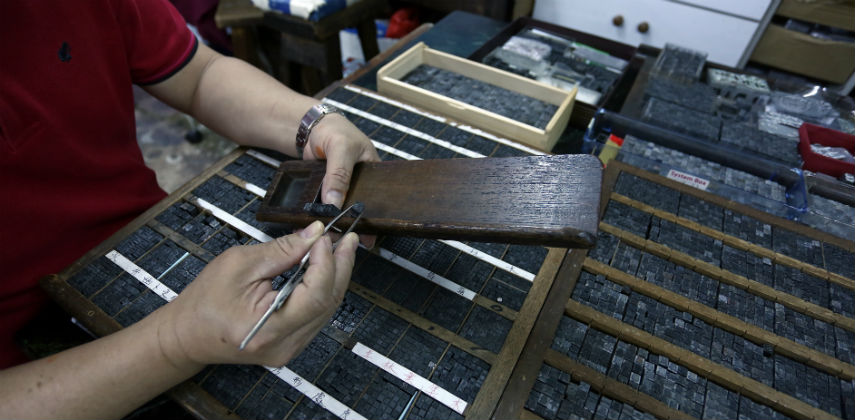
1. Typesetter
The post-war economic boom saw the meteoric rise in the number of manual typesetters as demand for printed materials, including envelopes, writing paper and business cards, increased exponentially. In their heyday, over 200 typesetting houses were operating in Central and Sheung Wan. They practised a very precise craft, with the use of a composing stick to assemble individual pieces of metal type into the required text before adjusting the printer to ensure the pressure on the paper was just right. However, the emergence of phototypesetting in the 1970s started to displace the need for this skill. And with the advent of on-screen word-processing programs, pretty much everyone became a typesetter working with a keyboard and a few clicks.
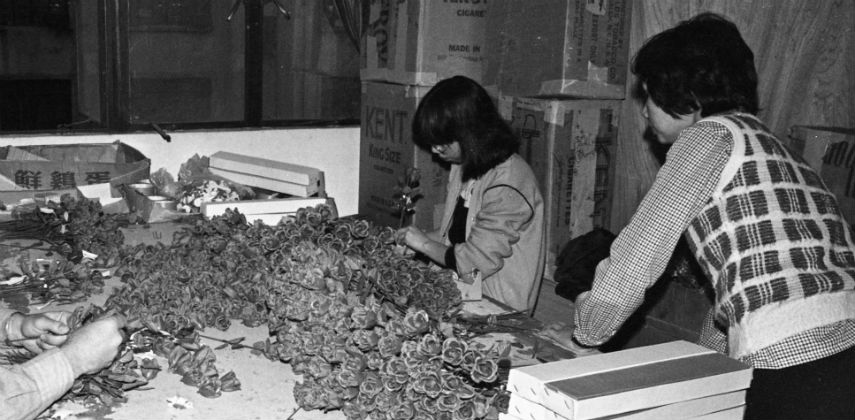
2. Plastic flower assembly worker
The plastics industry was also burgeoning in post-war Hong Kong. Among a wide variety of products, plastic flowers stood out as the most popular. Factory owners used to outsource the assembly of parts, providing ample opportunity for take-home piecework. Families would sit around putting together the petals, leaves and stems to make flowers. In the 1970s, Hong Kong became the “kingdom of plastic flowers”, and many earned their first pot of gold from the trade, including Hong Kong tycoon Li Ka-shing. As industrial production moved to factories in the mainland, the local assembly sector went into steep decline. To the younger generation, light industries such as flower assembly and beadwork now seem nothing but echoes of a past long gone.
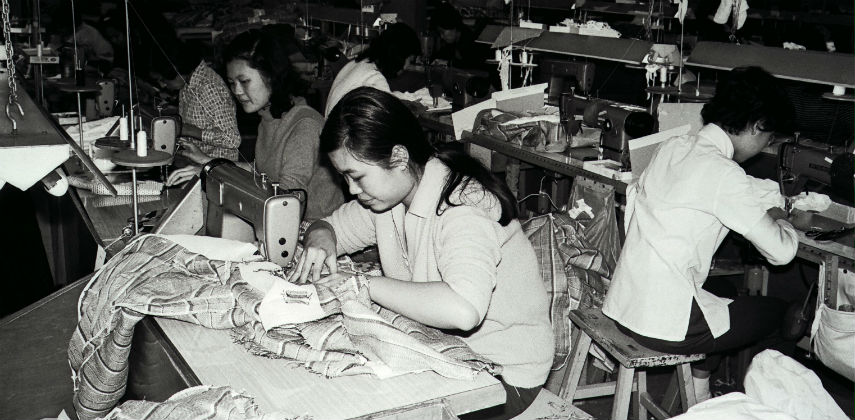
3. Seamstress
The catchy song Hurrah for Factory Girls by Hong Kong cinema icon Connie Chan Po-chu best captures the zeitgeist of the 1960s and ‘70s. At the time, Hong Kong was enjoying rapid economic growth, with textile manufacturing particularly successful. Most garment factories were situated in Cheung Sha Wan and Sham Shui Po, where neighbouring cotton mills, fabric shops and cottage industries made for an effective supply chain. Young girls, some barely 10 years old, were ushered into factories to learn the trade, from thread trimming and folding to ironing and packaging. By the 1990s, though, the local garment industry was in rapid decline as industrial production moved out of Hong Kong to cheaper areas in Southeast Asia.
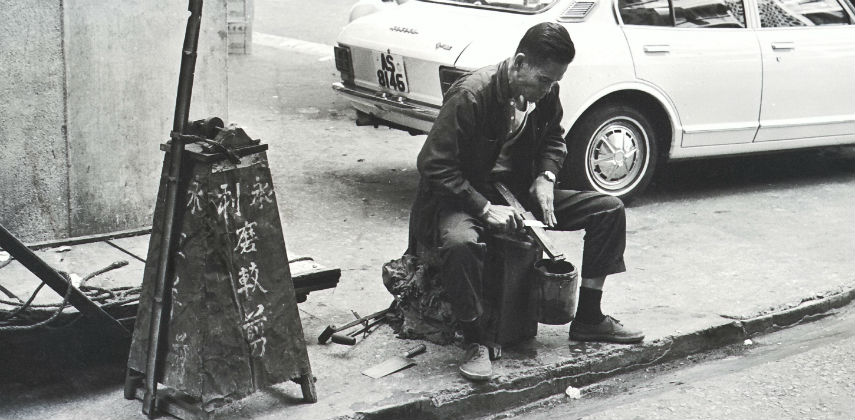
4. Blade sharpener
Before the dawn of industrialisation, most people lived in poverty and suffered serious deprivation. Broken items were supposed to be fixed and reused instead of being thrown away. Travelling from place to place, blade sharpeners carried their toolboxes, calling out for business. Anyone who had blunt knives or scissors would just follow the sound to have the cutting edges polished and sharpened. The peak demand for such services was usually before or after a major event such as festival or celebratory feast which entailed a lot of cutting and chopping. Other services of a similar nature, such as repairing utensils, pot binding and washboard mending could also be done in the customer’s home when necessary.
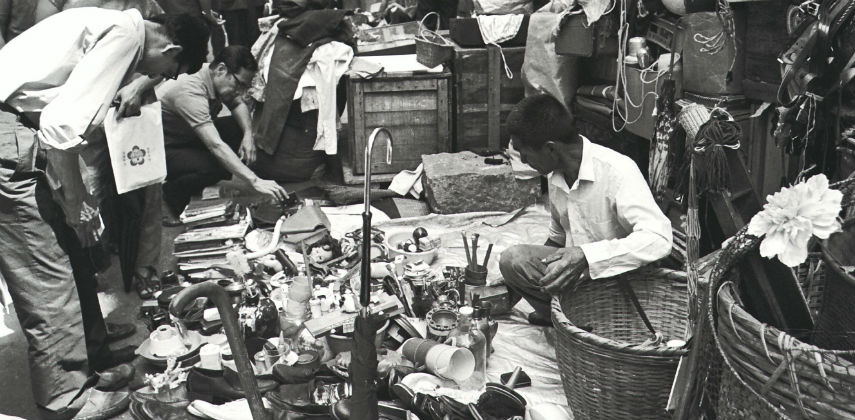
5. Rag-and-bone man
A familiar yet slightly accented voice calling for “used televisions, tape recorders, HiFi, pagers” is no doubt a collective memory shared by many residents of public housing estates in Hong Kong. In the 1980s and ‘90s, rag-and-bone men made their daily rounds buying unwanted household items. When I was small, I would simply bolt the door on hearing the peculiar cry, even from afar, fearing that kids like me might also be taken by those funny-looking guys. In the past, rag-and-bone men could make a healthy profit by selling on used home electronic items to dealers in the mainland. However, demand dropped drastically once China’s economy began to take off. And now people have far more convenient ways of selling off unwanted possessions, for instance via online platforms and phone apps. Instead of making their rounds, the modern versions of these old-style traders are now in the collectibles market, looking for things of greater value such as stamps and fine wine and catering to a wealthier clientele.
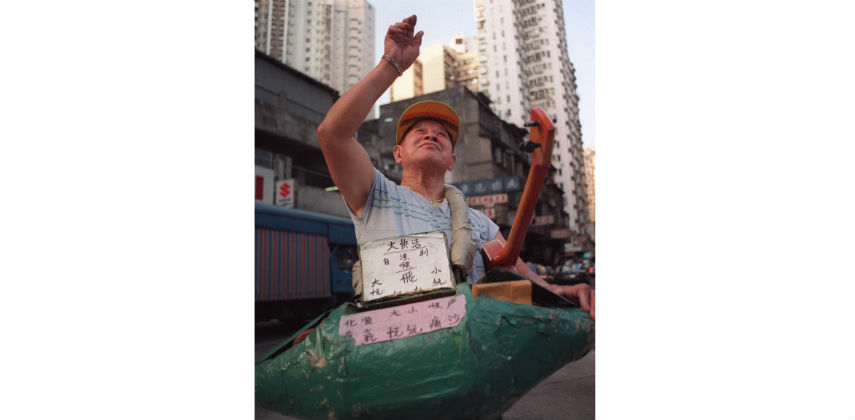
6. “Aeroplane olive” vendor
From the 1950s to the ‘70s, street vendors toting an olive-shaped container would sell liquorice olives, often throwing the snack to customers waiting on balconies above. The customer paid by throwing the money down, sometimes from six or seven storeys up. Fondly remembered as a something a trifle offbeat, the practice evoked the image of a plane taking off, and that’s how the snack got its name: “aeroplane olive”. Speaking of snacks which inspire nostalgia, vendors also used to pull their carts along the hallways of public housing blocks, calling out “White sugar cake and sago cake”. Children always found the taste of these and other nibbles irresistible and unforgettable.
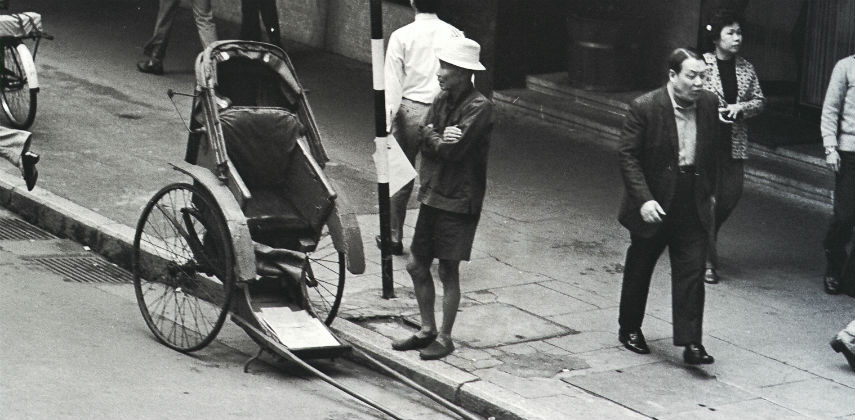
7. Rickshaw puller
Imported to Hong Kong from Japan in the 1880s, rickshaws, also known as huangbaoche and jinrikisha, were among the most common means of transport on the island, along with sedan chairs. In the 1920s, more than 3,000 two-wheeled passenger rickshaws were plying the streets, but the number steadily dwindled, and the government stopped issuing new licences in 1968. As of 2016, there were only three registered licence holders left in the city, but the remaining rickshaws are still a quaint attraction for tourists, for a short ride or as a prop for photos.
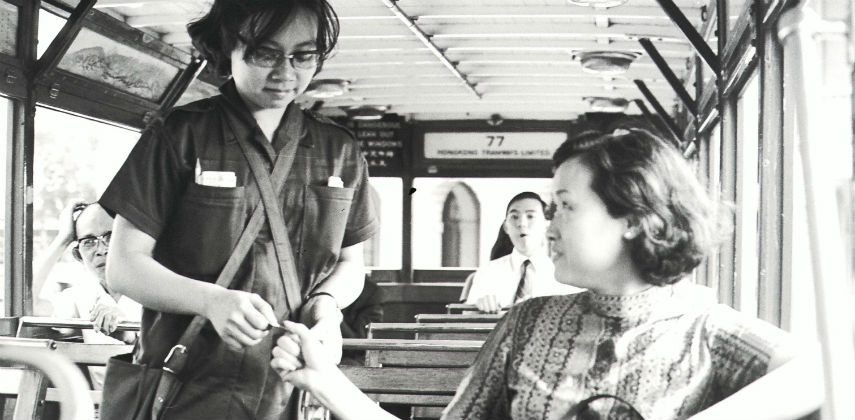
8. Tram conductor
The much loved electric trams, which have been operating since 1904, are an iconic feature of Hong Kong Island, and one of the most popular means of transport for tourists. In the old days, two conductors were stationed on the upper and lower decks of each tram to sell tickets to passengers. The job was phased out when coin boxes for fare collection were introduced in 1976.

 Eight New Jobs Facilitated by Technological Innovation
Eight New Jobs Facilitated by Technological Innovation
 Eight Fastest-Growing Jobs Benefitting from Government Policy and Technology
Eight Fastest-Growing Jobs Benefitting from Government Policy and Technology
 Technology takes recruitment sector into new era
Technology takes recruitment sector into new era